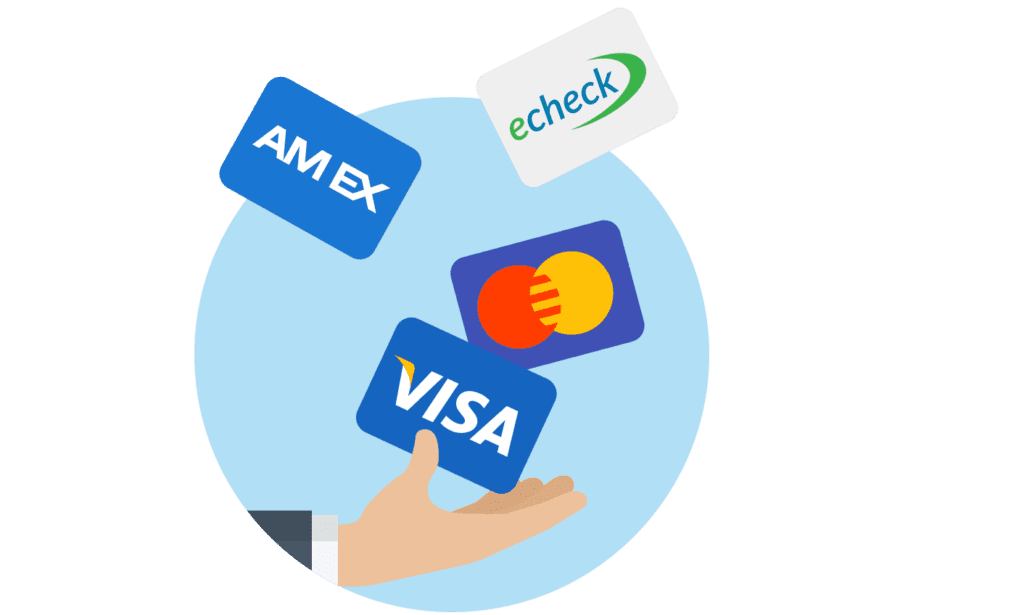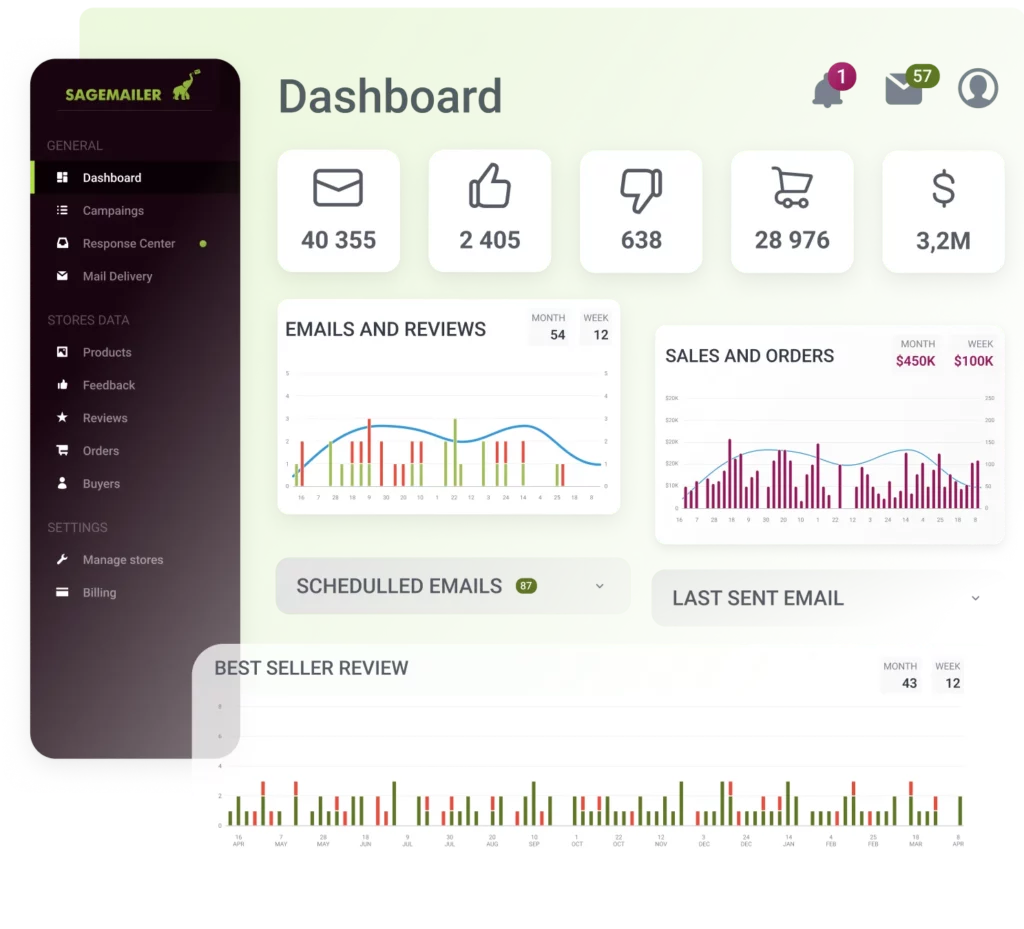Table of Contents
Alibaba and Amazon are the leading e-commerce platforms that attract many sellers and buyers. As a result, the sale of goods to Amazon through Alibaba is becoming increasingly popular. For those who want to start a business on Amazon, we have prepared a detailed guide on entering the market, successfully transporting products from China to America, and leveraging the platforms to your advantage.
In addition, you will learn how to sell Alibaba products on Amazon, what pitfalls can await you along the way, and how to get started.
What Is Alibaba?

Alibaba is a leading business-to-business online commerce platform connecting brands and sellers with contractors for thousands of product listings. So if you wish to create custom private labeled products for your company, it is the place you need to go.
Despite traditional online commerce platforms, such as Amazon, where clients make one-off purchases, Alibaba is a framework where companies buy goods in bulk to resell offline or in an online store.
Besides, it links users with many gold suppliers across the globe, so they can find top-quality items at meager rates — even if you have no big brand! Whether the customer is the CEO of a large company or runs a small Amazon business independently doesn’t matter. They all can register and effectively get branded products on Alibaba.com.
Why do Amazon sellers use Alibaba?
Why do merchants buy on Alibaba to sell on Amazon? Many Amazon merchants use this platform to get goods because of the simplicity of the user-friendly website and, of course, the low prices. Most producers you stumble on the platform will be located in China, where they may manufacture quality items at much more affordable prices than in Canada or the United States.
Any merchant can go to this platform right now and look for the type of item they are interested in working with and come across hundreds of possible suppliers. Spotting a manufacturer for your goods has never been easier.
Benefits of sourcing goods from Alibaba
There is a bunch of perks to sourcing your goods from producers on Alibaba, including:
- Low-cost items
- Thousands of goods to pick from
- Many different producers in one place
- The marketplace is straightforward and convenient to use
- Saves days (maybe even weeks) of time looking for products
- Sellers will usually work directly with the producer, cutting out the middleman
- It offers Trade Assurance, so sellers will get their money back if they don’t receive their products
What types of goods is this platform good for?
Use Alibaba if you’re searching to create your own private-label goods that are unique to your AMZ brand. If you have the custom logo and design specifications for an item, it is a perfect venue to find manufacturers that will make your dreams a reality.
DON’T use this platform to buy branded goods. While there are many trustworthy suppliers, there might be some who attempt to sell counterfeit items from big brands such as Nike or Disney. Some goods could look too tempting to sell. However, you need to refrain from following this option. Offering counterfeit products on Amazon is strictly prohibited. You will become permanently suspended from selling in the marketplace if you ignore its anti-counterfeiting rules.
How to Ship from Alibaba to Amazon FBA?
So, how to sell on Amazon from Alibaba? Let’s delve into the process a bit deeper. In your Seller Account, specify how you deliver the products. Otherwise, you can’t create a product listing. There are two possible ways – to transport the cargo yourself or with the FBA (Fulfillment by Amazon) service.
In the first case, you will have to organize everything yourself, find a warehouse in the USA, track the receipt, labeling, packaging, and delivery to the end consumer, consider the balance of products, and keep records.
The second option provides commissions for the service, including monthly payments for the sale of things, tools, or accessories and a fee for processing the order and its transportation.
Here are the essential steps on how to ship from Alibaba to Amazon FBA.

Stage 1: Do product research
Where to buy products to sell on Amazon? We have already analyzed this stage in detail. The important thing to remember is that if your products are similar to others, you will not make higher profit margins. So, look for a product that fills in the gaps in the market. Alibaba is a great place to look for common general merchandise.
When finding the right product and deciding on the items for reselling, also consider the following points:
- Are there any patent rights that may prevent you from offering the goods in the country you want?
- Does the product meet Amazon’s quality control, occupational safety, and health requirements?
- Does the product fall under the characteristics of dangerous goods for transportation?
This video will show how to sell Alibaba products on Amazon FBA in a few simple steps.
Stage 2: Get prices
Once you decide on products to sell, it’s time to get prices for your goods from probable suppliers. Then, all you have to do is go to the Alibaba website, choose Services → Sourcing solutions → Submit RFQ.
You can provide detailed information about your product, such as quantity, description and so on.
Likewise, you might contact the supplier and communicate that you are interested in their products. First, set up a template. The language should be simple, straightforward, and professional. Your template for sourcing from Alibaba should include questions such as:
- Minimum order volume (MOQ);
- Price MOQ;
- Product photos;
- Types of samples;
- Delivery options and payment methods;
- Product customization issues (if applicable).
Stage 3: Bargain
Now that you’ve settled on a few suppliers that match your criteria (low MOQ, gold supplier, turnover, etc.), you can message them for more information.
Here are some communication tricks:
- Be concise
- Present yourself and your business
- Describe what interests you
- Check delivery time and cost of samples
In short, the end goal is to determine which vendors meet your basic requirements and which do not. Depending on your budget, you’ll want to source products from Alibaba from multiple vendors. I usually approach 5-10 vendors and capture the results in a Google Sheet or Excel. When you start interacting with suppliers, you will try to get a sample of the products.
A few points to know about samples:
- They are vital because you must see the product before purchasing it and investing in inventory.
- Many manufacturers and suppliers will charge for express delivery by DHL, UPS, and FedEx to send samples to you quickly.
- In some cases, manufacturers may charge a sample fee, which is usually refunded after placing the order.
Stage 4: Get your samples
After you’ve finished your product, it’s time to buy a sample. The price of the samples may differ from the retail price of the product to a greater extent. The cost can be many times higher if you sell specially customized Amazon Private Label products.
When paying for goods, choose a secure payment method, such as PayPal.
Stage 5: Shipping from Alibaba to Amazon FBA
Shipping from Alibaba to Amazon FBA involves several steps and considerations to ensure a smooth and cost-effective process.
1. Negotiate Shipping Terms
Discuss shipping terms with the supplier. You can choose between EXW (Ex Works), FOB (Free on Board), or CIF (Cost, Insurance, and Freight) terms. FOB or CIF terms are most common for shipping directly to an Amazon FBA warehouse.
2. Select a Freight Forwarder
A freight forwarder is a company that helps facilitate the shipping process. They can help you find the best shipping method, negotiate rates, and handle logistics. You can find freight forwarders on Alibaba or through independent logistics companies.
3. Arrange for Inspection and Quality Control
Before shipping, it’s crucial to have your products inspected for quality control. You can hire a third-party inspection service or use the services Alibaba offers. This step helps ensure that you receive the products you’ve ordered in the expected condition.
4. Book Shipping and Arrange Transportation
Depending on the volume and weight of your shipment, you’ll have different shipping options. Common methods include air freight, sea freight, or a combination of both. Your freight forwarder can assist in booking the transportation.
5. Labeling and Packaging
Ensure that your products are labeled and packaged according to Amazon’s FBA requirements. Each item should have a unique barcode (UPC, EAN, or ISBN). Amazon provides specific guidelines for labeling and packaging, which you can find in your FBA account.
6. Create a Shipment Plan in Seller Central
Log in to your Amazon Seller Central account and create a new shipment plan. This will generate shipping labels and provide instructions for where to send your products.
7. Provide Shipping Information to Your Supplier
Share the shipping details (including the Amazon FBA warehouse address) with your supplier. They will then arrange for the products to be transported to the port or airport of departure.
8. Customs Documentation and Clearances
Ensure that all necessary customs documentation (such as commercial invoices, packing lists, and bills of lading) are prepared and submitted to the relevant authorities. Your freight forwarder or customs broker can assist with this.
9. Track and Monitor the Shipment
Keep a close eye on the progress of your shipment using the tracking information provided by your freight forwarder.
10. Amazon FBA Receiving Process
Once your products arrive at the Amazon FBA warehouse, they will go through a receiving process. Amazon will inspect the products, update their status, and make them available for sale on the platform.
How Can SageMailer Help You Boost Sales?
For sellers sourcing products from Alibaba, maintaining a strong presence on Amazon is essential for success. By automating feedback requests and monitoring feedback, SageMailer can help merchants enhance their reputation and rankings, ultimately leading to increased sales and business growth. Let’s discuss some of its key features:
Automated Feedback Requests
SageMailer automates the process of requesting feedback from Amazon customers. This is crucial because positive feedback and reviews are essential for establishing trust and credibility as a seller on Amazon. Automated requests ensure that you consistently collect feedback without manual effort.
Real-time review monitoring
Tracking reviews in real-time allows sellers to promptly address any negative feedback or issues. Timely responses demonstrate your commitment to customer satisfaction and can help mitigate the impact of negative reviews on your reputation.
A/B Testing for email campaigns
With SageMailer’s A/B testing feature, you have the power to analyze and refine your email campaigns. Don’t forget to test various variables to determine the most effective strategies for eliciting feedback from your customers. Finally, optimize your communication approach, and experiment with factors like delivery time and order status customization.
Support for all Amazon Marketplaces
SageMailer’s tool supports all Amazon marketplaces. This is essential for sellers who may source products from Alibaba for multiple Amazon regions. You can use the tool and its multi-lingual templates to manage feedback and reviews across various Amazon platforms.
Payment Methods for Purchasing Goods from Alibaba

You can choose among several payment methods when purchasing goods on Alibaba. Keep in mind that some of them are much safer than others. You’ll end up with five options:
- PayPal: If your supplier accepts PayPal, this is your best variant. In addition to the fact that it’s simple and very convenient, PayPal company provides buyers with protection.
- Escrow Service: It’s another decent option. The third-party will hold your money until you get your order.
- Letter of Credit: Although it’s a very secure method, it might turn out to be pretty complicated during the setup process. So, if it’s your first time with Alibaba, we don’t recommend it to you.
- Bank Transfer: It’s advisable only if you know your manufacturer or seller well. This option provides you with little or no recourse if something goes wrong with the order.
- Western Union: As in the case of a bank transfer, you won’t have any reimbursement if something goes wrong. Thus, it’s not the best method for any Amazon seller.
Anyway, remember to ensure your due diligence and select a payment method you are comfortable with.
Is Running a Business with Alibaba Safe?
At Alibaba, it is vital to maintain secure transactions. There are a lot of well-known suppliers who have been selling on Alibaba for many years. Choose “golden suppliers” who have built a positive reputation and trust to avoid fraud. These vendors pay a lot of money to get higher in Alibaba search results.
In addition, the Alibaba trade guarantee program protects buyers’ orders. This program reduces risks by providing a refund guarantee if suppliers do not comply with the terms of the contract, including inconsistencies in product quality and quantity, as well as delivery delays.
Are There Any Risks with Using Alibaba to Sell on Amazon?
Purchasing goods from Alibaba is usually secure and safe. However, just like with any marketplace, you cannot eliminate the chances of getting scammed. Thus, Alibaba.com offers its recommendations and practical tips for avoiding scammers:
- Fraudulent vendors sometimes offer incredibly low prices and then ask you to pay using hard-to-trace methods such as Western Union or wire transfer. If this happens, we recommend being careful.
- If the supplier pays great attention to the payment process (strives to get paid quickly), please take extra care of all elements of your transaction. As a general rule, suppliers are just as wary of scammers as you are, and they will take extra precautions to make sure they understand your order before proceeding to discuss payment.
- Call providers by phone to verify your conversations verbally. Skype is also a great tool for this.
- Be careful if the company name and vendor’s name are the same or if you use free email services such as Yahoo or Hotmail as your primary email.
- If you are still unsure about the supplier’s legitimacy, ask for a sample fee to ensure that the supplier’s product meets all of your expectations.
Conclusion: Buying on Alibaba and Selling on Amazon
Now you know how to buy from Alibaba and sell on Amazon. Running a business with Alibaba is a great and still relevant way to build an online business quickly. Of course, you will first need a lot of investment and willingness to work hard, but the profit will not wait, and you will earn money. Don’t forget to monitor the quality of the products you sell. It is also very important to track changes in rules and policies on Amazon. For example, the platform changes the cost of storing goods two times a year. It can reduce profits (another reason not to go on the edge of profitability). So, you should always be alert and constantly innovate to expand your brand.
Besides, if you wish to boost sales of the sourced goods, consider using any product review tool, such as SageMailer. It helps establish trust with clients and efficiently manage customer feedback, thus, enhancing conversion and generating revenue.




Aditya
Hello